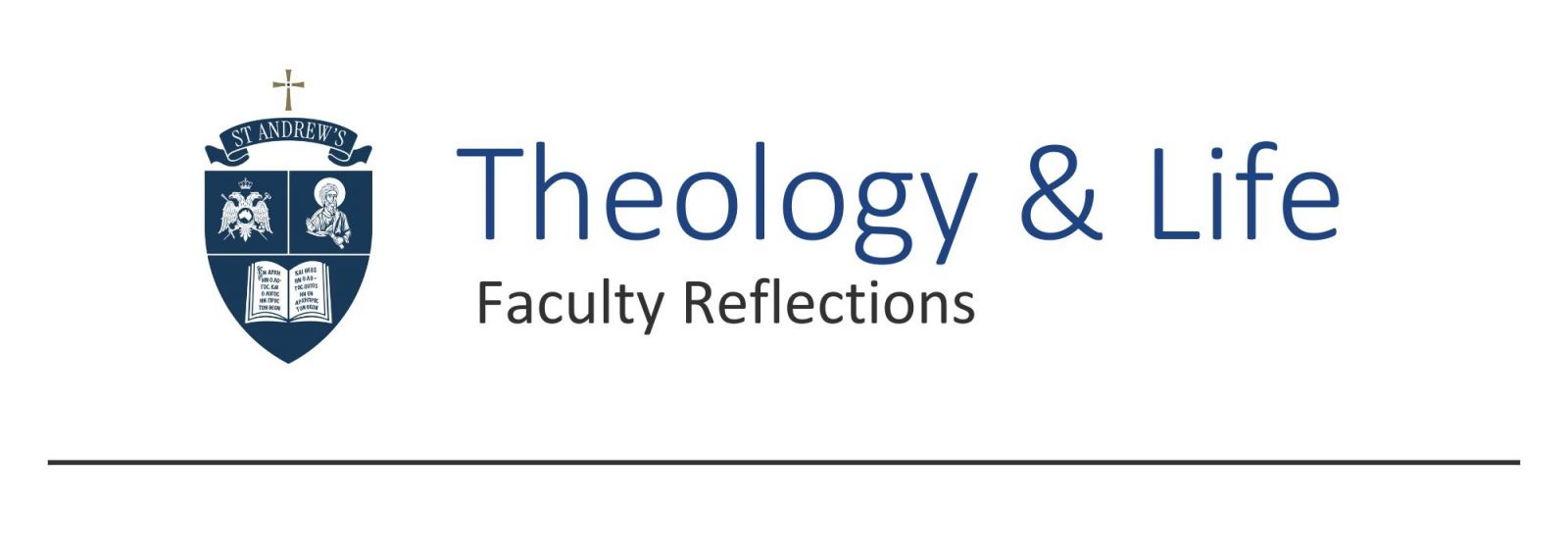- Home
- About us
- Students
- Courses
- Research
- Library
- News & Events
- Gallery
- Contact
- Our Blog
Latest News

The Liturgical Journey to Pascha:
Part Two: Great Lent
.jpg)
‘The Ladder of Divine Ascent, 12th century, Holy Monastery of St Catherine, Sinai.
by Dr Andrew Mellas (Senior Lecturer in Church History and Liturgical Studies)
As with the pre-Lenten period, which part one of this blog post explored, here in part two, we will look at how the hymns we sing during Great Lent invite us to reflect, ponder and pray. Indeed, part one finished with Cheesefare Sunday, but neglected to note what happens on the evening of that Sunday, which is often called the vespers of forgiveness. As we take our first steps of the 40-day Lenten journey, we ask each other for forgiveness. We remember the Gospel from earlier that day, Matthew 6:14–21, which teachers us the forgiveness that is afforded to the faithful by God if they too forgive their neighbour. The evening service is also known as the vespers of compunction, because it seeks to arouse this holy emotion (κατάνυξις) in the hearts of the faithful as they cry out to God: “Do not turn your face away from your child, for I am afflicted.” But the hymns also evoke the hope of redemption as the faithful sing: “O Lord, your grace has shone forth.” During the same evening, we start to sing a set of hymns beginning with ‘Θεοτόκε Παρθένε’, ‘O Virgin Theotokos’, in the plagal first mode of Byzantine music. These songs ask the Mother of God, the Baptist of Christ and all the saints to pray for our salvation.
During Great Lent, the Salutations to the Virgin Mary and the Saturday of the Akathist Hymn are special occasions that comfort us with the joy of Archangel Gabriel’s message—“Rejoice, highly favoured one, the Lord is with you; blessed are you among women!”—and the mystery of the Incarnation. One of the hymns chanted during these occasions is especially beloved by Orthodox Christians everywhere:
O Mother of God, to you my champion and commander, I, your City, saved from disasters, dedicate hymns of victory and thanksgiving; but as you have unassailable might from every kind of danger, deliver me now, that I may cry to you: ‘Rejoice, O unwedded bride!’
The Birth-Giver of God, the Virgin Mary, becomes the dwelling place of the Creator of the universe. However, the hymn also recalls Mary’s role as protectress of Constantinople, as the champion of Byzantium.
After the first instalment of the Salutations to the Mother of God, the faithful arrive at the first Sunday of Great Lent. From 843 AD, this Sunday was known as the “Sunday of Orthodoxy” and celebrated the victory over Iconoclasm, but this was an addition to the more ancient commemoration of the prophets Moses, Aaron, David and Samuel. The theme that emerges is that of a journey towards the passion, crucifixion and resurrection of Christ. Similarly, while in Late Byzantium the Second Sunday of Lent became known as the Sunday that commemorated the fourteenth-century defender of Hesychasm, St Gregory Palamas, according to the Typikon of the Great Church, it originally celebrated the feast of the second-century martyr known as Polycarp of Smyrna, who was an exemplar of the ascetic struggle. The hymns for this day also revisit the theme of the prodigal son and his repentance.
The third Sunday of Lent is dedicated to the veneration of the precious Cross. Indeed, over a millennium ago in Byzantium, the faithful could physically venerate the Cross on which Christ was crucified in the Cathedral of Hagia Sophia in Constantinople. This liturgical event foreshadowed the passion of Christ in Holy Week:
O Christ our God, of your own will you accepted Crucifixion, for the common restoration of humankind. Taking the reed pen of the Cross, out of love for humankind, in the red ink of royalty with bloody fingers you signed our absolution. Do not forsake us, who are in danger once again of being parted from you. Take pity on your people in distress, for you alone are longsuffering. Rise up and fight against our enemies, as you are all-powerful.
The fourth Sunday of Lent is dedicated to St John Climacus who wrote the famous treatise known as the Ladder of Divine Ascent. The hymns for this day invite the faithful to a life of holiness:
Come, let us work in the mystical vineyard, producing fruits of repentance within it, not labouring for things that are eaten or drunk, but in prayer and fasting attaining the virtues. Through such works the Lord of the labour, being pleased, grants the denarius, by which He redeems souls from the debt of sin, the one who alone is abundantly merciful.
The fifth and final Sunday of Lent commemorates Mary of Egypt, a fifth-century saint who exemplified repentance in the Byzantine tradition. Before she left Jerusalem to dedicate herself to asceticism in the desert beyond the Jordan, Mary was a notorious harlot. However, when Mary is prevented from entering a church in Jerusalem during “the holy feast of the Exaltation of the Cross” by an invisible force, she describes the feeling of compunction that pierces her heart:
Only then did I realize the cause which prevented me from laying eyes on the life-giving cross, for a salvific word touched the eyes of my heart, showing me that it was the filth of my deeds that was barring the entrance to me. Then I began to cry, lamenting and beating my breast, raising sighs from the depths of my heart.
However, before this Sunday became synonymous with St Mary of Egypt, in early Byzantium, this Sunday was devoted to the parable of the rich man and poor Lazarus (Luke 16:19–31), which is why one of the hymns reminds us that “the Kingdom of God is not eating and drinking, but righteousness and asceticism, together with holiness” (cf. Romans 14:17). While this Sunday is the final Sunday of Lent, and although Great Lent formally concludes on the Friday of that week, what immediately follows is the beginning of Christ’s Passion: Palm Sunday and Holy Week.



.png)